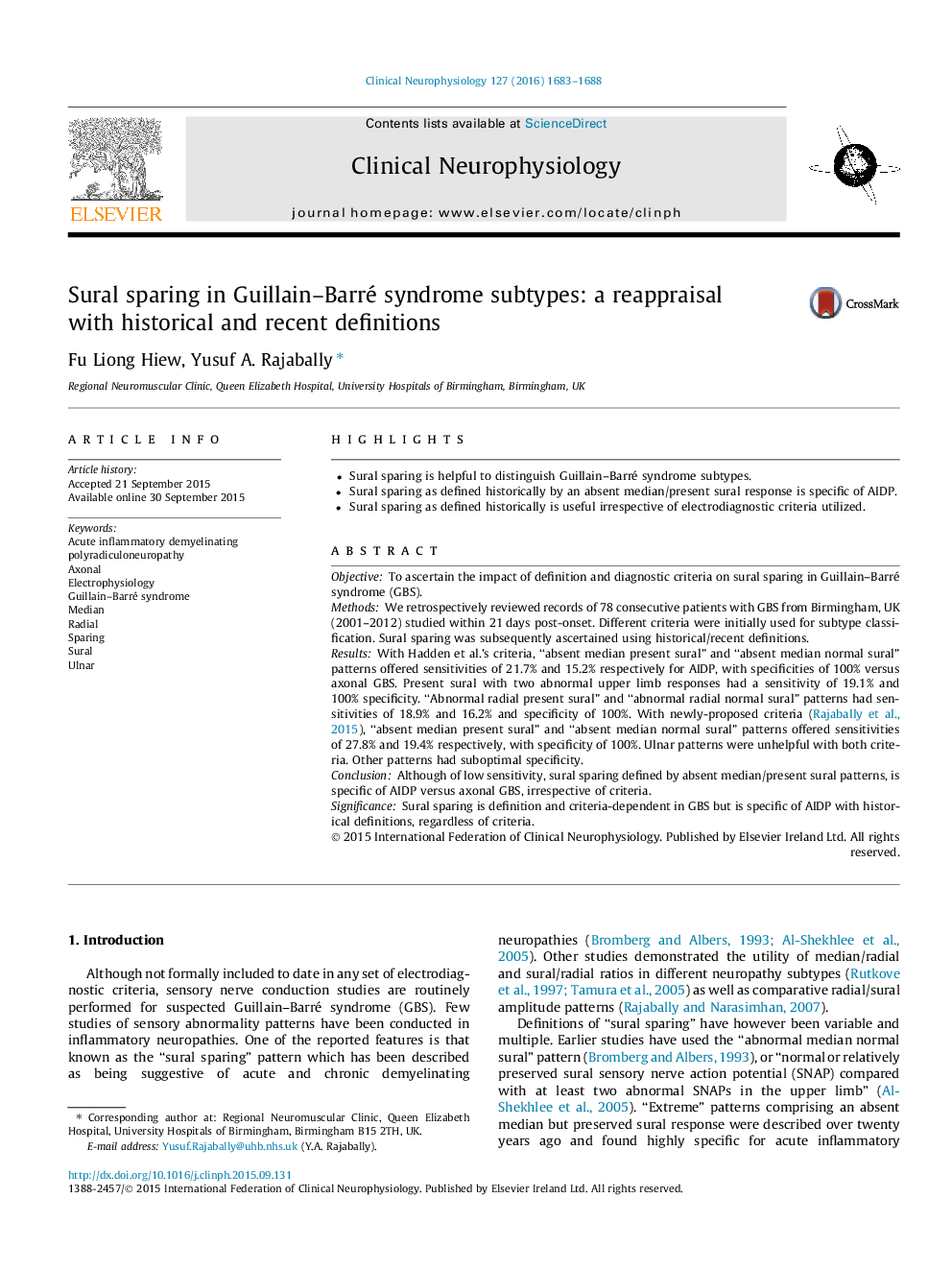| Article ID | Journal | Published Year | Pages | File Type |
|---|---|---|---|---|
| 6007698 | Clinical Neurophysiology | 2016 | 6 Pages |
â¢Sural sparing is helpful to distinguish Guillain-Barré syndrome subtypes.â¢Sural sparing as defined historically by an absent median/present sural response is specific of AIDP.â¢Sural sparing as defined historically is useful irrespective of electrodiagnostic criteria utilized.
ObjectiveTo ascertain the impact of definition and diagnostic criteria on sural sparing in Guillain-Barré syndrome (GBS).MethodsWe retrospectively reviewed records of 78 consecutive patients with GBS from Birmingham, UK (2001-2012) studied within 21Â days post-onset. Different criteria were initially used for subtype classification. Sural sparing was subsequently ascertained using historical/recent definitions.ResultsWith Hadden et al.'s criteria, “absent median present sural” and “absent median normal sural” patterns offered sensitivities of 21.7% and 15.2% respectively for AIDP, with specificities of 100% versus axonal GBS. Present sural with two abnormal upper limb responses had a sensitivity of 19.1% and 100% specificity. “Abnormal radial present sural” and “abnormal radial normal sural” patterns had sensitivities of 18.9% and 16.2% and specificity of 100%. With newly-proposed criteria (Rajabally et al., 2015), “absent median present sural” and “absent median normal sural” patterns offered sensitivities of 27.8% and 19.4% respectively, with specificity of 100%. Ulnar patterns were unhelpful with both criteria. Other patterns had suboptimal specificity.ConclusionAlthough of low sensitivity, sural sparing defined by absent median/present sural patterns, is specific of AIDP versus axonal GBS, irrespective of criteria.SignificanceSural sparing is definition and criteria-dependent in GBS but is specific of AIDP with historical definitions, regardless of criteria.
